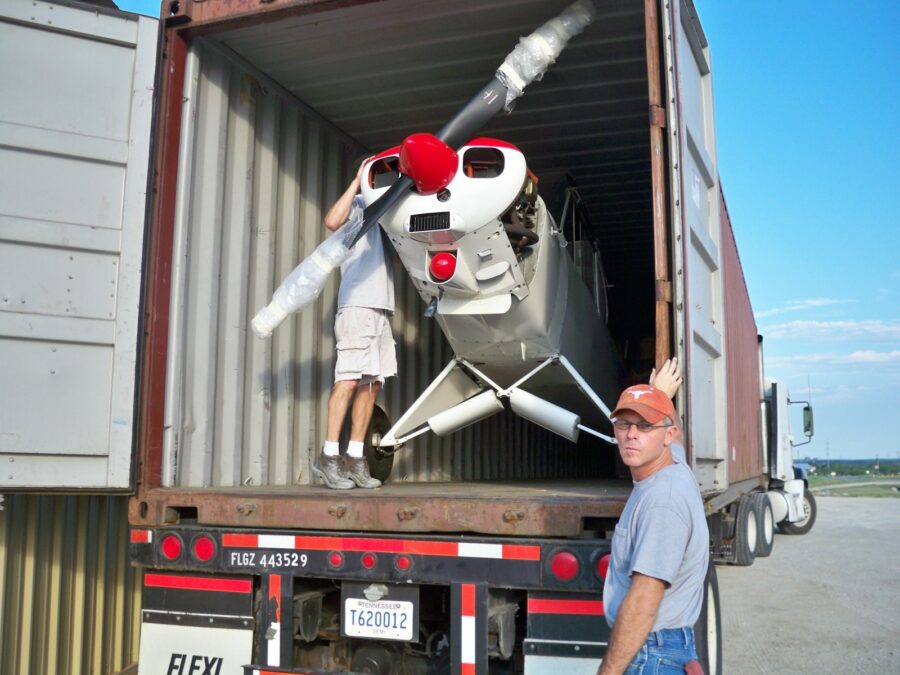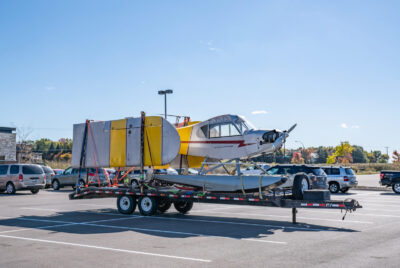Shipping Airplanes: An In-Depth Interview With A-1 Auto Transport on Airplane Heavy Equipment Hauling
18 November 2023 | Updated on February 05, 2024
Have you ever wondered about the logistics required for airplane shipping?
Yes, even airplanes often get shipped around the world. They’re either bought or sold or cannot fly the distance required and must be transported by other means.
But how do these amazing machines end up being shipped?
Today heavy equipment hauling experts at A1 Auto Transport will go into the complexities of airplane shipping, what to expect along the journey, and many pitfalls to avoid.
Let’s get started.


Photo by Tony Webster / Wikipedia
How are Planes Shipped?
Indeed, most planes that require delivery are simply flown to wherever they are required. But that isn’t possible at all times, and that’s when the heavy equipment experts come in handy.
Sometimes, airplanes are taken apart and shipped via cargo plane or boat, and then assembled at their target destination. Smaller planes often cannot make the entire journey themselves as they’re limited to refueling in many differing airfields.
This can cost a lot of time and money, especially if the plane is being flown by a pilot who’s been hired, further adding to the expense. During these times, it often makes more sense to take apart the plane and reassemble it later, instead of incurring the high cost and time lost of having the plane flown to other parts of the world.
If for instance, you are going to ship a Cessna 172, the wingspan is going to be far too wide to fit onto a typical flatbed trailer. The normal practice is to ship the fuselage separately from the rest of the aircraft, and then ship the parts that remain in a regular big rig truck.
What are Some Difficulties When it Comes to Airplane Shipping?
The biggest difficulty that you’ll encounter with airplane shipping is insurance. Even a small plane like the Cessna 172 can cost upwards of $350,000 in new condition (and that’s the starting price).
As these planes become more expensive, the insurance that is required also rises. The owner of the plane should always fully insure their aircraft. It’s important as during shipping, anything can happen, from delays to total loss, even if the chance is quite low, it’s important to have insurance.
Should You Transport a Plane or Fly to the Destination?
Often, planes are sold in partially working condition for parts, and in these cases, they must be shipped as they cannot be flown. If the plane cannot handle an overseas or long-distance trip, it will also require to be transported by sea.
Airplanes that require repair are also transported daily. The other scenario in which it’s best to transport a plane is when it’s being assembled, as it’s common for aircraft companies to ship their planes in parts to their target destination where they will be assembled.
How Much Does it Cost to Ship an Airplane?
Shipping a plane can cost anywhere from $1,000 to $5000 for a smaller plane, and potentially many thousands if the plane is a multi-seater and must be disassembled and reassembled on site.
Thankfully, the heavy equipment shipping team at A-1 Auto Transport can give a quote on any type of shipping, whether it be for a plane, boat, or anything in between. The distance also matters, if you’re only transporting a broken plane a few states away then it shouldn’t cost too much.
If however, you’re doing an overseas trip for a large plane, then the price can reach fairly high prices reasonably fast. It’s best to shop around for a quote from multiple providers to ensure that you get the best rate possible.


Shipping a Piper Super Cub in a container.
Conclusion
The intricacies of airplane shipping, as explored through the insights provided by A-1 Auto Transport’s heavy equipment hauling experts, unveil a fascinating world of logistics and challenges. The question of how planes are shipped is met with a nuanced answer that involves a combination of flying, disassembly, and transportation by land or sea, depending on the size, distance, and condition of the aircraft.
The complexities arise when considering the difficulties inherent in airplane shipping, with insurance standing out as a significant concern. The high value of even small planes necessitates comprehensive insurance coverage to safeguard against potential delays, damages, or total loss during transportation. This crucial aspect underscores the importance of meticulous planning and risk management in the shipping process.
The decision to transport a plane versus flying it to the destination depends on various factors, including the working condition of the aircraft, its capacity for long-distance travel, and the purpose of the transportation. Whether the goal is to sell planes for parts, transport a non-operational aircraft for repair, or assemble planes at the destination, careful consideration of logistics and cost-effectiveness guides the decision-making process.





























